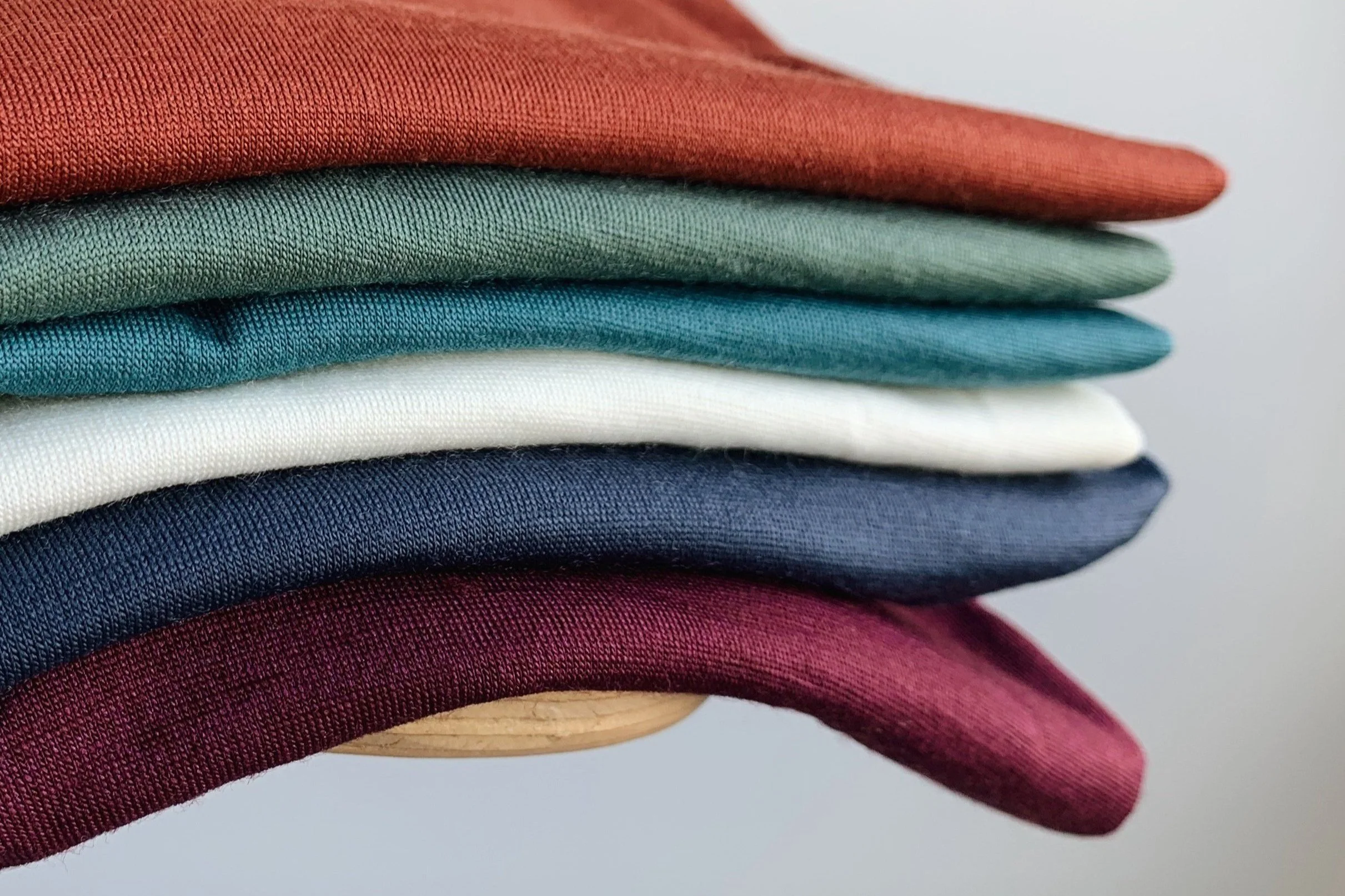We do sustainability differently
We do sustainability differently
Good intentions spurred the sustainable fashion movement, but now, it seems that brands tout their green credentials to relieve consumers of guilt associated with consumption—and the resulting environmental impact. We believe that every purchase we make has an impact on the earth, regardless of material or a company’s sustainability claims. More consumption of a “greener” product doesn’t mean the earth is better off.
We are not here to say that we’ve solved the fashion industry’s environmental issue or that we’re the most sustainable option (which numerous brands do say). We do, however, have a unique perspective on sustainable business practices and hope to be a catalyst for change in the way businesses operate and people shop.
From a product standpoint, we strive to make long-lasting, timeless styles that don’t need frequent washing.
Durability - Our clothing is designed to last a lifetime, not a season. Quality is top priority from start to finish — raw materials, yarn spinning, knit structure, and sewing details.
Timeless styles - We’re not concerned with the latest fashion trends. Our business is built on timeless basics that can be worn year after year, instead of pieces that go out of style.
Less washing - We love merino wool because it doesn’t need to be washed as frequently as other materials. Everything we make benefits from merino wool’s natural odor fighting abilities. (Depending on the study, 30% to 70% of a garment’s carbon emissions come after purchase in the form of washing and drying.)
Changing consumer behavior: our 100 day challenge is our main tool for changing the way people think about clothing.
Less is more - More clothing doesn’t result in more happiness. In fact, simple wardrobes can provide mental clarity and reduce decision fatigue.
Spotlight effect - Guess what, people don’t notice or care what you wear nearly as much as you think. What really matters is how you feel.
Mending investment pieces - Premium garments receive premium care. When you spill or get a snag, you’re more likely to take action. We love giving care advice and helping you get the most out of garments.
Secondhand - If customers have a wool& item that isn’t seeing much use, we encourage them to find the buyer who values the garment highest and will therefore care for it best and wear it most. We’re proud of the robust secondhand marketplace for wool& products.
Less washing - The detergent industry has convinced us that we need to wash garments after every wear. This is false. Many garments can go multiple days without washing. Pro tip: Wet the pits - Why wash an entire garment when only the pits smell? It sounds crazy, but wetting the armpits of your wool garment and hanging overnight to dry will reduce or eliminate the odor.
100 day challenge participants recognize the benefit of wearing more and washing less.
Additional business practices that actually lead to less consumption.
Reduce impulse purchases (discounting) - Promotions encourage incremental consumption and impulse purchases. In a perfect world, we’d never run a single promotion. However, we need a way to incentivize purchases of older colors, fits or styles, so we have a modest 10% off section on our site. We also do a small gift with purchase to show our customers some extra appreciation around the holiday season. We’re not trying to trick you into purchasing with language like “act before they’re all gone” or “sale ends in 3 hours”.
Reduce impulse purchases (scarcity) - Limited edition styles or colors can create a frenzy of FOMO and impulse purchasing. We don’t do this. If something sells out and has strong demand from our customers, we’ll make it again. You can shop wooland.com knowing that hot sellers won’t disappear.
Other practices
Packaging - Since our very first shipment, we’ve strived to be plastic free. 99% of our packaging is made from post-consumer waste paper, and is completely curbside recyclable.
Recycling - We recycle return packaging, find alternate uses for cardboard supply boxes by offering them to our local community to use for various purposes, such as upcycling or gardening.
Anti-Landfill - We make every effort to keep our inventory out of landfills. We are committed to processing returned items and getting them back into inventory once they pass inspection. We offer customers repair options alongside replacement options for small defects, and sell slightly damaged/defective merchandise during our warehouse/mystery sales. By doing these things, we meet our goal of being a company that produces as little waste as possible.



